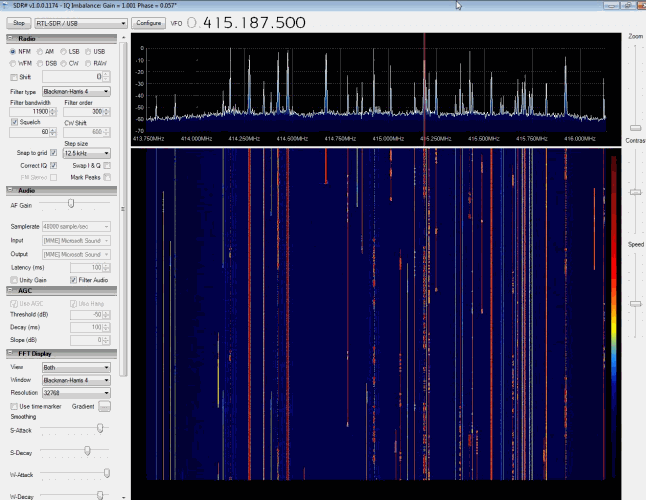In today's competitive business world, understanding the role of an SDR (Sales Development Representative) is crucial for companies looking to scale their sales processes effectively. As businesses increasingly focus on lead generation and nurturing customer relationships, the SDR plays a pivotal role in driving revenue growth. But what exactly is an SDR, and why is this role so important?
This article aims to provide a detailed explanation of what an SDR is, their responsibilities, and how they contribute to a company's success. Whether you're a business owner, sales professional, or simply curious about the sales industry, this guide will equip you with all the necessary knowledge to understand the significance of SDRs in modern sales strategies.
As we delve deeper into this topic, we'll explore the skills required for SDRs, best practices for managing SDR teams, and how technology is transforming their role. By the end of this article, you'll have a clear understanding of what makes an SDR indispensable in today's sales environment.
Read also:Lee Ha Yul The Rising Star In The Entertainment Industry
Table of Contents
- What is an SDR?
- The Role of an SDR in Sales
- Key Skills Every SDR Should Have
- Difference Between SDR and BDR
- A Typical Day in the Life of an SDR
- Important Metrics for Measuring SDR Performance
- Common Challenges Faced by SDRs
- Technology and Tools for SDRs
- The Future of SDRs in Sales
- Conclusion
What is an SDR?
An SDR, or Sales Development Representative, is a professional whose primary responsibility is to generate new business opportunities by identifying and qualifying potential leads. Unlike traditional sales roles, SDRs focus on outbound activities such as cold calling, email outreach, and networking to connect with prospects who may not have shown prior interest in the company's offerings.
The role of an SDR is critical because they act as the first point of contact between a company and potential customers. By nurturing these initial interactions, SDRs help create a pipeline of qualified leads that can then be passed on to account executives or closing teams for further engagement.
Key Takeaway: An SDR is responsible for lead generation and qualification, setting the stage for successful sales conversions.
The Role of an SDR in Sales
Responsibilities of an SDR
SDRs play a multifaceted role in the sales process. Their responsibilities include:
- Identifying potential customers through market research and data analysis.
- Reaching out to prospects via phone, email, or social media platforms.
- Qualifying leads based on predetermined criteria such as company size, industry, or budget.
- Scheduling meetings or demos with qualified leads for further discussion.
- Collaborating with the sales team to ensure a seamless transition of leads.
Impact on Business Growth
SDRs contribute significantly to business growth by ensuring a steady flow of qualified leads into the sales pipeline. This not only increases the chances of closing deals but also improves the overall efficiency of the sales process. According to a report by Salesforce, companies that invest in SDR programs experience higher revenue growth compared to those that do not.
Key Skills Every SDR Should Have
Being an effective SDR requires a combination of technical and interpersonal skills. Some of the most important skills include:
Read also:Kyoko Ichiwaka A Rising Star In The World Of Entertainment
- Communication Skills: The ability to articulate value propositions clearly and engage prospects effectively.
- Persuasion: Convincing potential customers to take the next step in the sales process.
- Time Management: Prioritizing tasks and managing a high volume of leads efficiently.
- Data Analysis: Using data to identify trends and target the most promising leads.
- Resilience: Handling rejection and maintaining motivation in a fast-paced environment.
Developing these skills can significantly enhance an SDR's performance and contribute to their long-term success in the sales industry.
Difference Between SDR and BDR
Understanding the Distinction
While both SDRs (Sales Development Representatives) and BDRs (Business Development Representatives) focus on generating leads, their roles differ in scope and approach:
- SDRs: Primarily focus on outbound activities, targeting new prospects and qualifying leads for the sales team.
- BDRs: Often work on both outbound and inbound leads, exploring strategic partnerships and long-term business opportunities.
This distinction is crucial for businesses looking to structure their sales teams effectively. Understanding the unique contributions of each role ensures that resources are allocated optimally.
A Typical Day in the Life of an SDR
A day in the life of an SDR involves a mix of outreach activities, follow-ups, and collaboration with the sales team. Here's a glimpse of what an SDR's typical day might look like:
- Morning: Reviewing the list of leads and planning outreach strategies.
- Midday: Conducting calls and sending personalized emails to prospects.
- Afternoon: Following up with interested leads and scheduling meetings.
- Evening: Collaborating with the sales team to discuss progress and refine strategies.
By maintaining a structured routine, SDRs can maximize their productivity and achieve their targets more efficiently.
Important Metrics for Measuring SDR Performance
Key Performance Indicators (KPIs)
To evaluate the effectiveness of SDRs, companies often track the following metrics:
- Number of Qualified Leads: The total number of leads that meet the company's qualification criteria.
- Conversion Rate: The percentage of leads that are successfully converted into opportunities.
- Average Deal Size: The average revenue generated per deal sourced by the SDR.
- Response Rate: The percentage of prospects who respond to outreach efforts.
Monitoring these metrics allows businesses to identify areas for improvement and optimize their SDR strategies accordingly.
Common Challenges Faced by SDRs
Despite their critical role, SDRs often encounter several challenges in their day-to-day work:
- Handling rejection and maintaining motivation.
- Navigating complex sales cycles and understanding diverse industries.
- Adapting to changing market conditions and customer preferences.
Addressing these challenges requires ongoing training, mentorship, and the use of advanced tools to streamline processes.
Technology and Tools for SDRs
Enhancing Productivity with Technology
Modern technology plays a vital role in supporting SDRs in their work. Some of the most commonly used tools include:
- CRM Systems: Platforms like Salesforce and HubSpot help manage leads and track interactions.
- Email Automation Tools: Solutions such as Outreach and Yesware enable personalized yet scalable email campaigns.
- Calling Software: Tools like Gong and ZoomInfo facilitate efficient phone outreach and provide insights into call performance.
By leveraging these technologies, SDRs can enhance their productivity and deliver better results for their organizations.
The Future of SDRs in Sales
As the sales landscape continues to evolve, the role of SDRs is also transforming. Emerging trends such as artificial intelligence, machine learning, and predictive analytics are reshaping how SDRs identify and engage with prospects. Companies that embrace these innovations will be better positioned to capitalize on the full potential of their SDR teams.
In addition, the growing emphasis on customer experience and personalization means that SDRs must adapt their strategies to meet the evolving expectations of modern buyers. This shift underscores the importance of continuous learning and development for SDRs in the years to come.
Conclusion
In conclusion, understanding what an SDR is and their role in the sales process is essential for businesses aiming to achieve sustainable growth. From lead generation and qualification to collaboration with the sales team, SDRs play a vital role in driving revenue and building customer relationships.
To succeed in this dynamic field, SDRs must develop a diverse skill set, stay updated with industry trends, and leverage technology to enhance their performance. By focusing on key metrics and addressing common challenges, businesses can empower their SDR teams to deliver exceptional results.
We invite you to share your thoughts and experiences in the comments section below. Additionally, feel free to explore other articles on our site for more insights into sales strategies and best practices. Together, let's continue to grow and thrive in the ever-evolving world of sales!


